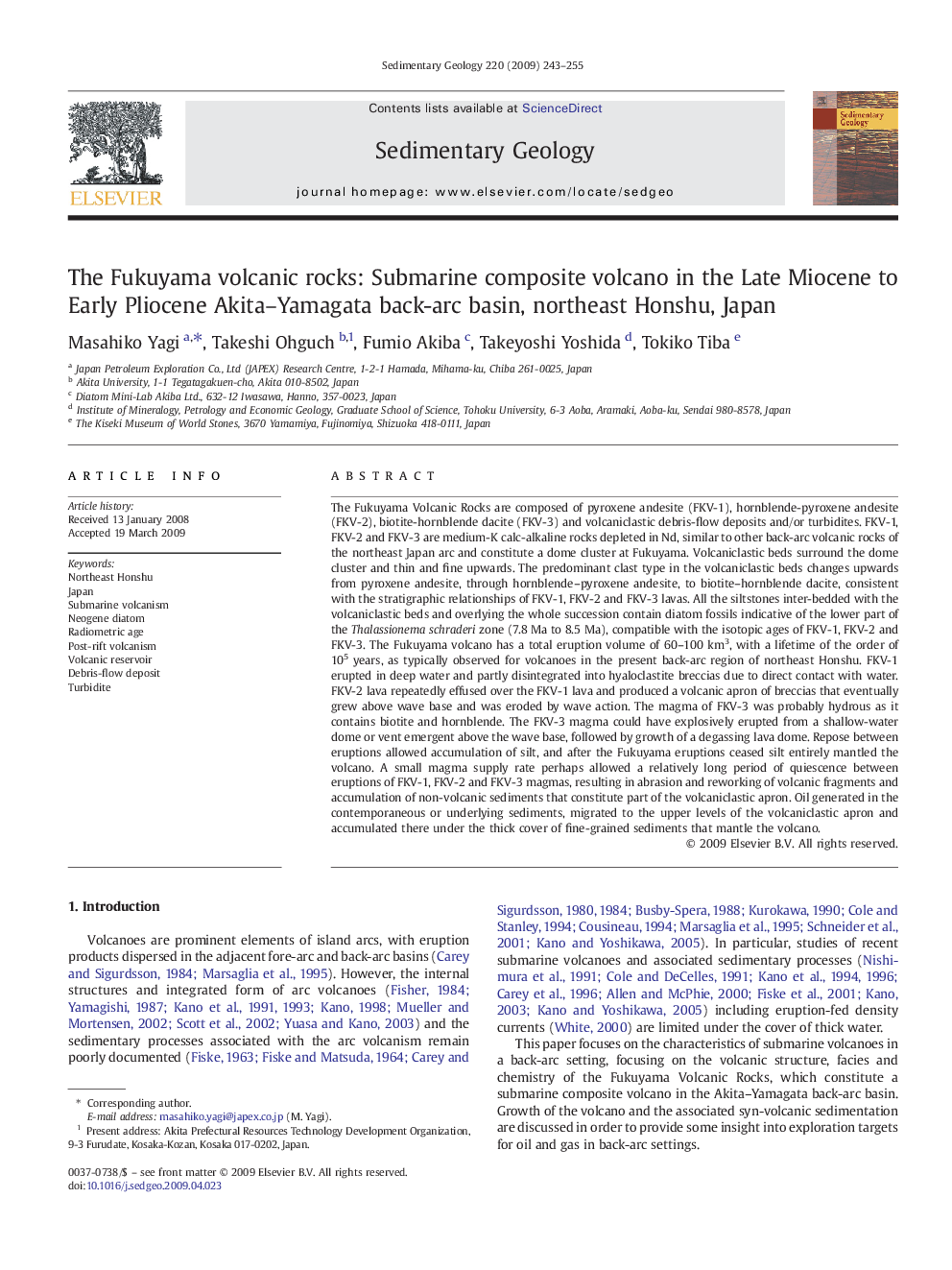| کد مقاله | کد نشریه | سال انتشار | مقاله انگلیسی | نسخه تمام متن |
|---|---|---|---|---|
| 4690270 | 1636135 | 2009 | 13 صفحه PDF | دانلود رایگان |

The Fukuyama Volcanic Rocks are composed of pyroxene andesite (FKV-1), hornblende-pyroxene andesite (FKV-2), biotite-hornblende dacite (FKV-3) and volcaniclastic debris-flow deposits and/or turbidites. FKV-1, FKV-2 and FKV-3 are medium-K calc-alkaline rocks depleted in Nd, similar to other back-arc volcanic rocks of the northeast Japan arc and constitute a dome cluster at Fukuyama. Volcaniclastic beds surround the dome cluster and thin and fine upwards. The predominant clast type in the volcaniclastic beds changes upwards from pyroxene andesite, through hornblende–pyroxene andesite, to biotite–hornblende dacite, consistent with the stratigraphic relationships of FKV-1, FKV-2 and FKV-3 lavas. All the siltstones inter-bedded with the volcaniclastic beds and overlying the whole succession contain diatom fossils indicative of the lower part of the Thalassionema schraderi zone (7.8 Ma to 8.5 Ma), compatible with the isotopic ages of FKV-1, FKV-2 and FKV-3. The Fukuyama volcano has a total eruption volume of 60–100 km3, with a lifetime of the order of 105 years, as typically observed for volcanoes in the present back-arc region of northeast Honshu. FKV-1 erupted in deep water and partly disintegrated into hyaloclastite breccias due to direct contact with water. FKV-2 lava repeatedly effused over the FKV-1 lava and produced a volcanic apron of breccias that eventually grew above wave base and was eroded by wave action. The magma of FKV-3 was probably hydrous as it contains biotite and hornblende. The FKV-3 magma could have explosively erupted from a shallow-water dome or vent emergent above the wave base, followed by growth of a degassing lava dome. Repose between eruptions allowed accumulation of silt, and after the Fukuyama eruptions ceased silt entirely mantled the volcano. A small magma supply rate perhaps allowed a relatively long period of quiescence between eruptions of FKV-1, FKV-2 and FKV-3 magmas, resulting in abrasion and reworking of volcanic fragments and accumulation of non-volcanic sediments that constitute part of the volcaniclastic apron. Oil generated in the contemporaneous or underlying sediments, migrated to the upper levels of the volcaniclastic apron and accumulated there under the thick cover of fine-grained sediments that mantle the volcano.
Journal: Sedimentary Geology - Volume 220, Issues 3–4, 15 October 2009, Pages 243–255